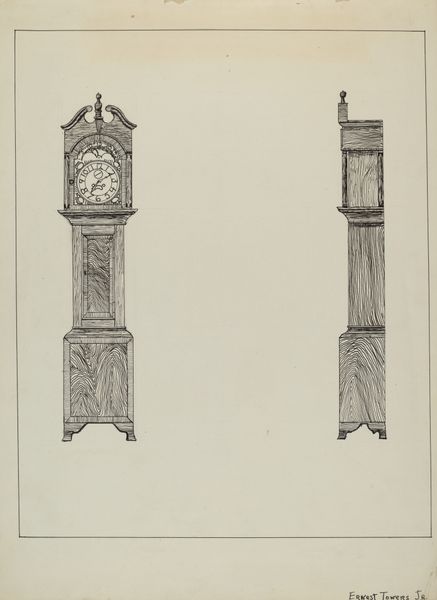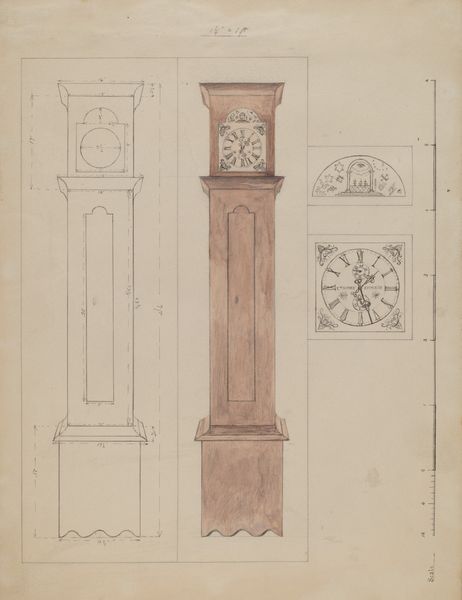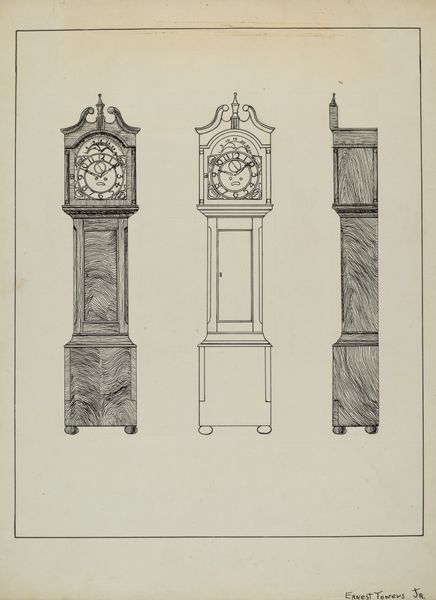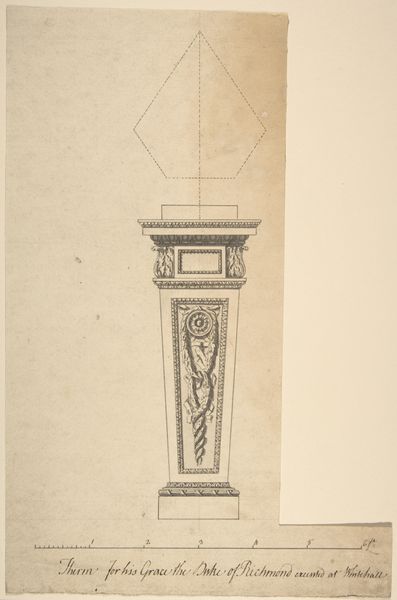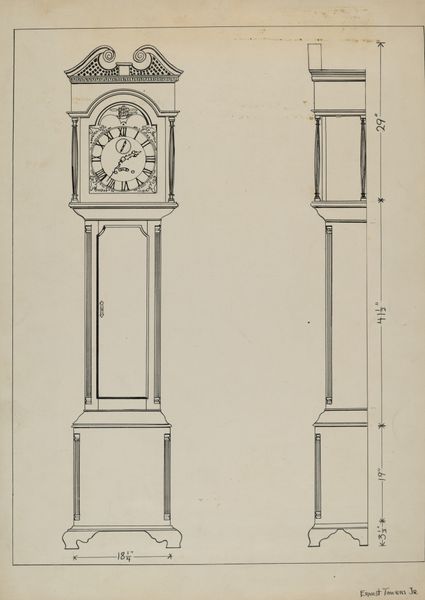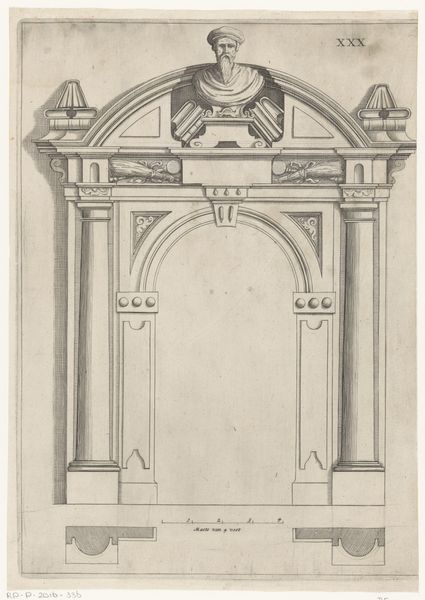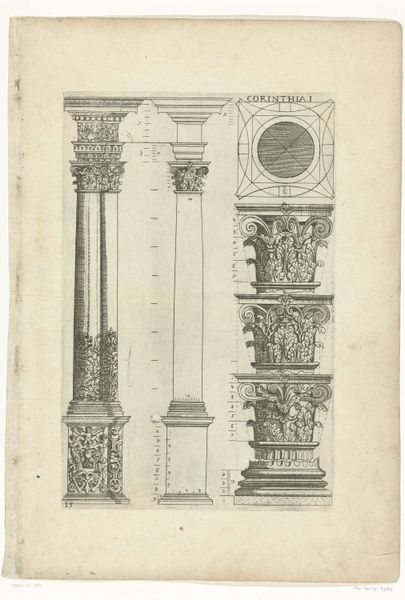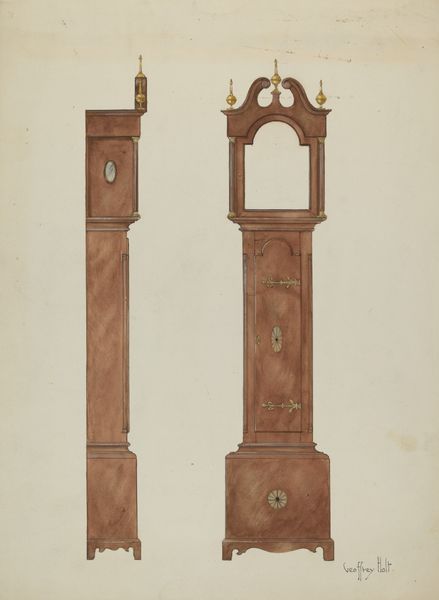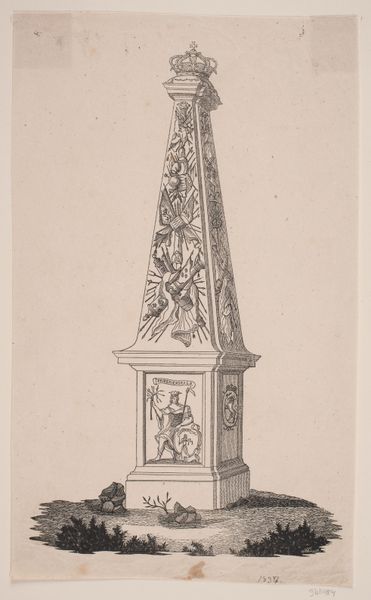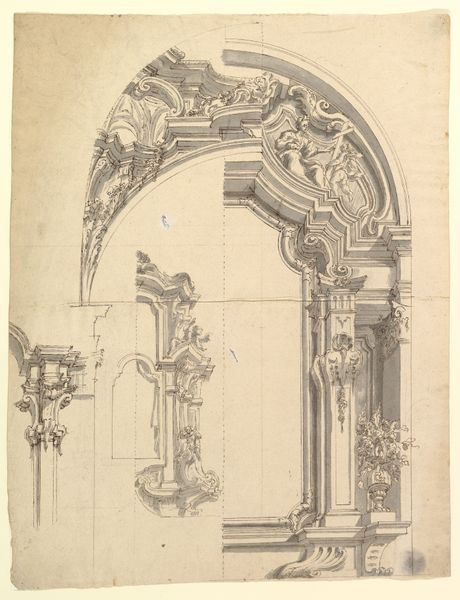
drawing
#
drawing
#
form
#
geometric
#
line
Dimensions: overall: 35.7 x 26.4 cm (14 1/16 x 10 3/8 in.)
Copyright: National Gallery of Art: CC0 1.0
Curator: What a precise piece of draftsmanship! This drawing, simply titled "Clock," comes to us from around 1936 by Ernest A. Towers Jr. and it appears to be a rendering, presumably in preparation for crafting a wooden clock. The use of line gives it an interesting depth, as it models a certain amount of the texture. Editor: It feels melancholic somehow, even with its geometric precision. I can almost hear the ticking in an empty house. The rendering emphasizes the wood grain to such an extent that it makes it feel less functional and more like a relic. A fossil. Curator: Interesting take. From my perspective, I think that the level of technical detail provides us with a glimpse into the value placed on craftsmanship during the 1930s, and how utilitarian objects could be conceived and documented as things of considerable artistry. Consider that Towers gives us exact measurements; it could have served not merely as a plan, but as a display of mastery. Editor: And yet, doesn't the very idea of meticulous planning clash with the relentless march of time that the clock represents? This reminds me of the broader themes in art concerning our attempts to regulate nature, our very existence, even as time sweeps through. Curator: I agree that the stark contrast of an ordered existence clashing with the fluidity of nature is an accurate read here. It appears as an idealized clock for a home. Certainly during this period time pieces gained significant social and economic relevance as efficiency became synonymous with success in industry and home life. Editor: Thinking about that context, maybe there's also something to be said about accessibility to time itself. Clocks can make time something physical and available in the private sphere of one’s house, one's autonomy to make a time of your own. To give rise to your own time, to reclaim stolen or forgotten time. Curator: Well, thank you for that rather philosophical spin! It has helped me broaden my understanding. Now, in parting, do you suppose the choice of presenting this in line-art adds a certain timelessness? Editor: Yes! The lines ensure its existence. Freezes a brief idea. It creates this impression of preservation amid change. Fascinating!
Comments
No comments
Be the first to comment and join the conversation on the ultimate creative platform.
